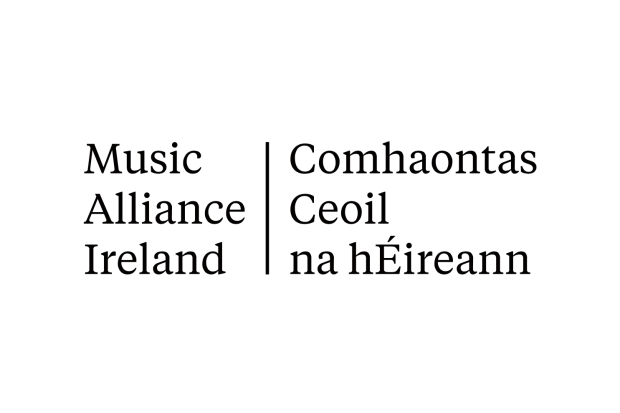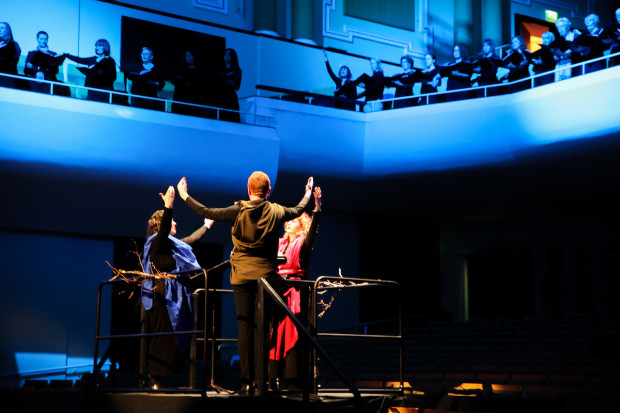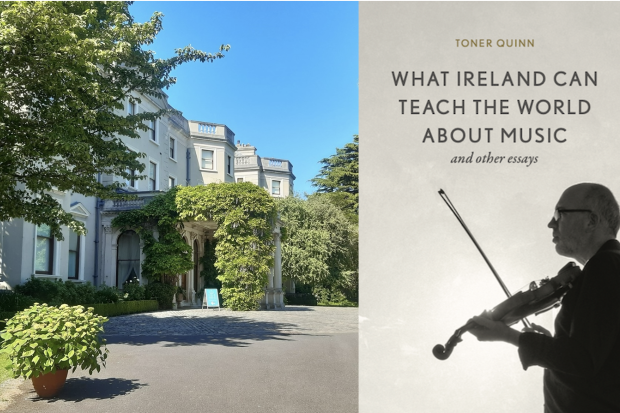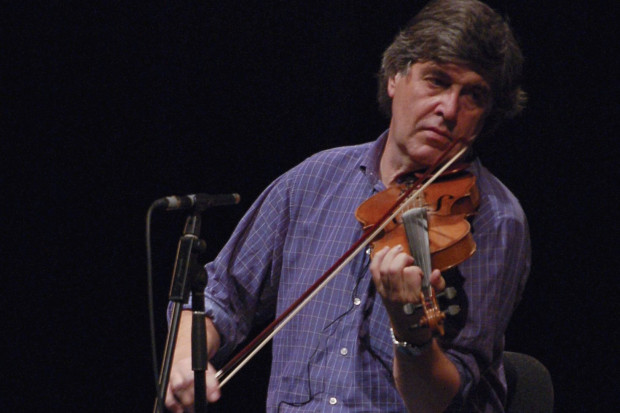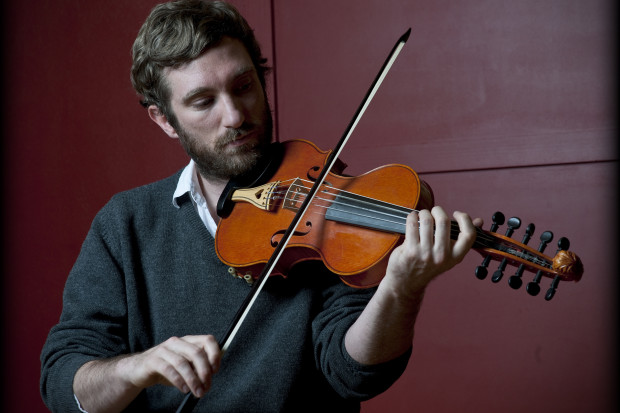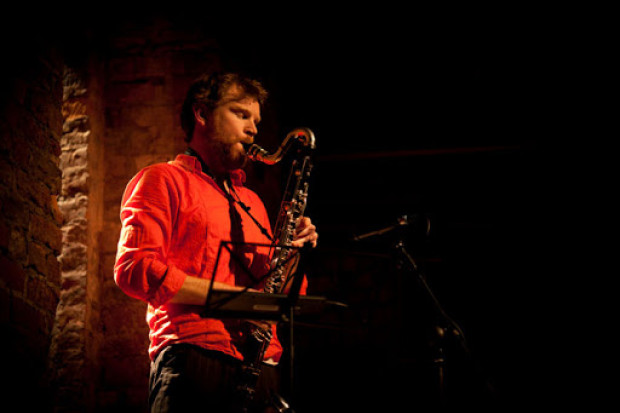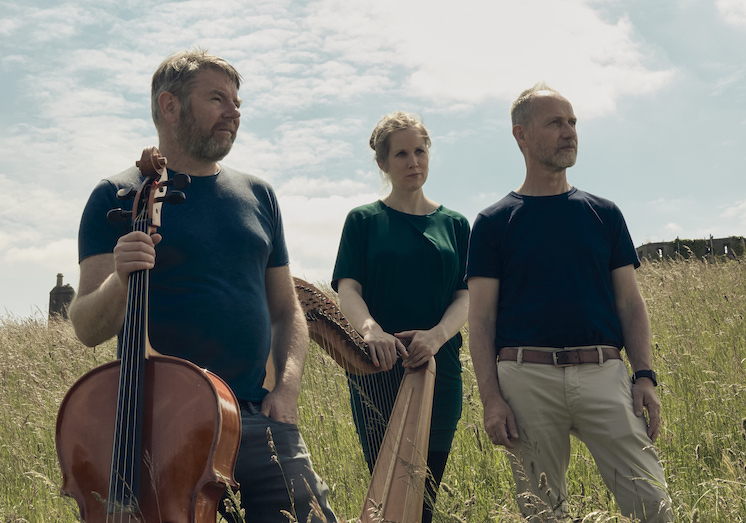
Kevin Murphy, Úna Monaghan and Iarla Ó Lionáird (Photo: Bríd Ó'Donovan)
After the Silence
The narrative for the return of live music has been regularly repeated. After eighteen months, everyone will launch themselves into the experience. It will be characterised by joy and celebration. It will be a relief to be back to normal, or what you feel normal is. But what if it is not quite like that? We are different now. We carry a new experience that shifts the way we look at the world. Music and art will change.
This Music Network concert was the first live event in the Lime Tree Theatre in Limerick since it went dark in March 2020. Louise Donlon, director of the theatre, became emotional as she related this when introducing the artists. Towards the end of a journey, you realise how far you have travelled, or not. There were just 50 of us in a 500-seater venue on Friday 3 September, still socially distanced. But it was novel to be back. I was struck by how much ritual there is to concerts.
I don’t know precisely how the artists for Music Network tours are assembled; I imagine it is a mix of the practical and the creative. The grouping of singer Iarla Ó Lionáird, harper Úna Monaghan and cellist Kevin Murphy was attractive because it was difficult to know what would emerge. We have heard Ó Lionáird in various contexts, singing Donnacha Dennehy’s Grá agus Bás and The Hunger with Crash Ensemble or performing with the Gloaming or with Steve Cooney, and similarly with Monaghan, combining harping, technology and improvisation as a soloist and in group formats. I was aware of Murphy’s work through the band Slow Moving Clouds, and he too seems to be on an uncommon artistic journey.
Ó Lionáird sat at the centre, a drone from his harmonium introducing the first song, ‘Fáinne Geal an Lae’. with cello harmonics and ambient sounds from Monaghan’s electronics. It’s a song that he has recorded on his 2011 album Foxlight and performed with Steve Cooney; this version was slower, more meditative and experimental, the accompaniment gradually moving into harp and cello improvisations bouncing off electronically produced sounds.
This low-key, searching approach was prominent throughout. The children’s song ‘Tá Dhá Ghabhairín Bhuí Agam’ began with goat-bell sounds mixed with swooshing and tinkling on strings from Murphy and Monaghan, before Ó Lionáird began the ditty at a slow pace. ‘Táim curtha ó bheith im’aonair im’luí’/I’m weary of lying alone’ took a more straightforward approach, with a naturistic wash in the background. But Ó Lionáird’s singing is remarkable, the focus he lends to the lyrics, the way he lets the gravel of his voice on low notes rumble, until he slides up again to a medium range, the plaintiveness he can bring to a simple melody.
In general the set showed the lines of the collaboration: they were Ó Lionáird repertoire + Monaghan experimentalism + Murphy ambient brush strokes. The strongest piece of the evening was the one they were commissioned to write together. Using a fragment of a recording of ‘Cú-cú-ín’ by the Cork singer Máire Ní Cheocháin (1924–2019), the trio built an affecting mix of song and sound that culminated in Ó Lionáird and Monaghan reciting the words of the song over the recording and electronically generated sounds, before fading away again. Another highlight was Monaghan’s solos where she played her own tunes, including ‘Mammy’s’, ‘An Dearcadh’ and ‘Tubaiste agus Taisceadán’.
Overall, the concert was probably a little lacking in contrast, with most pieces taking a similar approach apart from ‘Cú-cú-ín’. But as we sat in the dark in this ancient ritual called the concert, the whole evening caused me to reflect, again, on how rich this Irish tradition is, that these days this experimentalism sits comfortably within the tradition. Other facts jump out: Ó Lionáird sings almost entirely in Irish to an audience who may never totally understand him; Monaghan is part of a revival of a harping tradition that almost completely died out two hundred years ago; this music and language should not be here at all, and yet it is, and it has survived another national calamity. When Ó Lionáird asks the audience, at the beginning, ‘Conas atá sibh?’, almost everyone answers ‘Go maith’. And why wouldn’t they, you may say, after fourteen years of schooling in the language? But I’ll be honest: it surprises me, everytime, that we are all here again, with this rich culture, and that it’s still expanding.
Iarla Ó Lionáird, Úna Monaghan and Kevin Murphy are in Dunamaise Arts Centre, Portlaoise, this evening followed by Cork (10th), Newbridge (11th), Dún Laoghaire (12th), Listowel (14th), Clifden (15th), London (17th), Belfast (18th) and Sligo (19th). For full details, visit www.musicnetwork.ie.
Published on 8 September 2021
Toner Quinn is Editor of the Journal of Music. His new book, What Ireland Can Teach the World About Music, is available here. Toner will be giving a lecture exploring some of the ideas in the book on Saturday 11 May 2024 at 3pm at Farmleigh House in Dublin. For booking, visit https://bit.ly/3x2yCL8.












